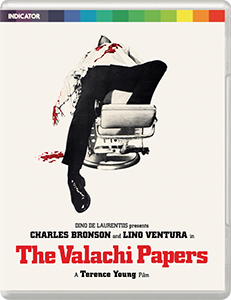
Names of numbered streets are spelled out if less than 100 and written as numerals otherwise. Some footnotes have been added to the pages for clarification. Due to the length of the document, it has been broken up into four parts. An ellipsis at the end of a page indicates that the last line(s) of that page are missing. We initially attempted to preserve the original length of typed lines, but that caused readability problems for some mobile devices. Page numbering and the author's misspellings have been preserved. In formatting these pages for the web, we have tried to remain true to the original. This has turned out to be an enormous project, and visitors are asked to be patient as we add to the collection of available pages (listed individually below). Our intent is to provide online a complete and searchable edition of Valachi's unpublished work. The reports were later confirmed by the U.S. Arrangements were made not by a family member but by a local woman, identified as Marie Jackson, who corresponded with Valachi while he was in prison. Matthew Section of Gate of Heaven Cemetery in Lewiston, New York, near Niagara Falls. A month later, news reports stated that Valachi's burial spot was in the St. An April 6 announcement indicated that the remains had been claimed and moved to a burial location but did not identify the claimant or the location.

His wife Mildred and his son Donald refused. He died of an apparent heart attack, April 3, 1971, at the age of sixty-seven.įollowing his death, federal officials went in search of a family member to claim the remains and provide for burial. 14, 1968, to a combined pair of cells (later known as "the Valachi suite") at the medium security federal prison at La Tuna, Texas.

He was transfered on March 22, 1966, to federal prison at Milan, Michigan, and on Sept. He was held for a time in the "death house" of a prison in Washington, D.C. Valachi spent the rest of his days in federal custody under heavy guard. The original manuscript has been preserved at the JFK Presidential Library and Museum. It was reportedly used as source material by Maas in the writing of The Valachi Papers. He then wrote this autobiographical manuscript, "The Real Thing," while in federal custody in 1964. Senate Select Committee on Improper Activities in the Labor or Management Field (McClellan Committee). In the autumn of 1963, he testified before the U.S. Valachi subsequently began cooperating with agents of the FBI. That resulted in a Valachi life sentence for second-degree murder. In the summer of 1962, Valachi beat to death another inmate who he mistakenly believed was attacking him. Valachi learned of his boss's suspicion and feared for his life. He became involved in narcotics trafficking in the late 1950s and was convicted and sentenced to long prison terms in 19.Ĭrime boss Vito Genovese received a similar sentence for narcotics and became convinced that Valachi had betrayed him. He was an active participant in the Castellammarese War of 1930-1931. Through his underworld career, Valachi was at various times member of the Reina/Lucchese, Maranzano/Bonanno and Luciano/Genovese crime families of New York. Organized crime rivalries eventually pulled him into the Mafia. He became an accomplished burglar and getaway car driver. During childhood, he was drawn into street gangs. Valachi was born Septem(some sources report 1904), to Neapolitan-American parents in the East Harlem section of New York City. Many of his recollections were discussed in The Valachi Papers (1968) by Peter Maas and presented in a 1972 motion picture with the same name. His information was shared with Congress, the press and the public. Joseph Valachi, a turncoat Mafioso, provided federal investigators with detailed information on his criminal activities and former colleagues.


 0 kommentar(er)
0 kommentar(er)
